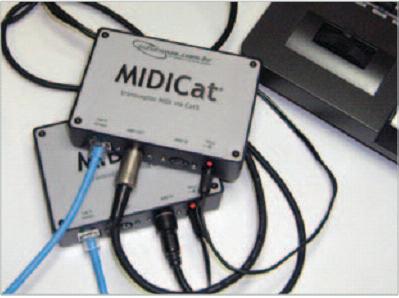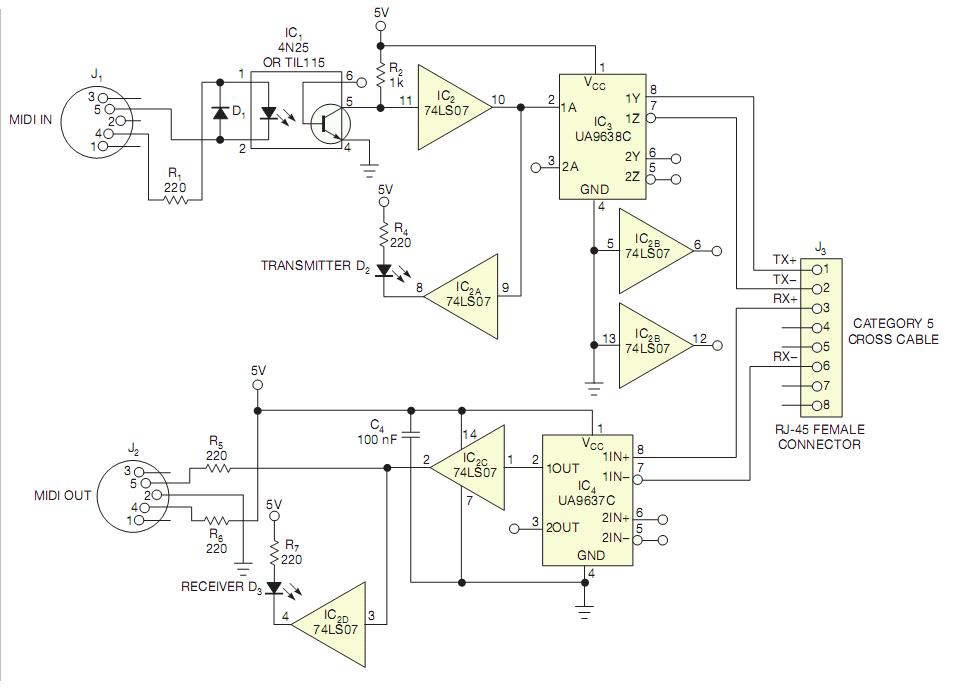Miguel Ratton, Informus Music Center, Parana, Brazil; Edited by Martin Rowe and Fran Granville
A single Category 5 cable links MIDI devices up to 100m away.
The MIDI (Musical Instrument Digital Interface) protocol transfers digital control messages among synthesizers, audio equipment, and computers. A consortium of hardware and software manufacturers in 1983 developed the MIDI standard, which defines the use of microphone cables to link devices at a maximum distance of approximately 20m. That length may be insufficient for controlling distant devices. For example, in some venues, the equipment is on stage and you may want to send control messages from a remote mixing board.
The circuit in figures 1 and 2 uses line drivers and receivers that let you transfer MIDI data signals over a common Category 5 LAN cable. MIDI data comes from the MIDI transmitter device and passes through optocoupler IC1 (4N25 or TIL115), conforming with the MIDI standard because it provides isolation between the devices.
The MIDI signal then goes to the UA9638C line driver, which transforms the data from a single-ended signal to a differential signal suitable for transmission over the Category 5 cable. The transmission passes through one of the pairs of a cross cable, reaching the UA9637C line receiver in an equal circuit on the other end. The signal then reformats to TTL (transistor-transistor-logic) level and travels through a MIDI output to reach a MIDI receiver device. LEDs D2 and D3 show the transmitter/receiver activity. Tests prove that this circuit can transfer messages over distances of more than 100m without losing data.


